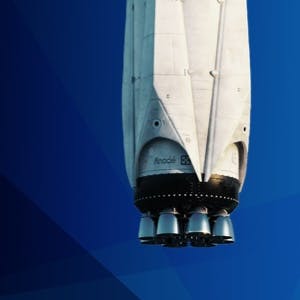- Home
- All updates
- EDGE Insights
- Industries
- Company Search
- My Watchlists (Beta)
All Updates
Relativity Space’s 3D-printed rocket successfully launches; misses orbit
Hexagon unveils Advanced Compensation for metal 3D printing
Eden AI raises EUR 3 million in seed funding to accelerate product development
Wiz acquires Dazz to expand cloud security remediation capabilities
Immutable partners with Altura to enhance Web3 game development and marketplace solutions
OneCell Diagnostics raises USD 16 million in Series A funding to enhance cancer diagnostics
BioLineRx and Ayrmid partner to license and commercialize APHEXDA across multiple indications
SOPHiA GENETICS announces global launch of MSK-IMPACT powered with SOPHiA DDM
Biofidelity launches Aspyre Clinical Test for lung cancer detection
Spendesk partners with Adyen to enhance SMB spend management with banking-as-a-service solution
Mews acquires Swedish RMS provider Atomize to enhance Hospitality Cloud platform

Space Travel and Exploration Tech
Relativity Space’s 3D-printed rocket successfully launches; misses orbit
-
Relativity Space, a space travel and launch company, managed to successfully launch its 3D-printed rocket, Terran 1, from LC-16 launch pad in Cape Canaveral, Florida, but was unable to reach orbit.
-
Recording a flight time of three minutes, Terran 1 was able to achieve Max Q (the point of the launch sequence at which the rocket is under the maximum level of atmospheric resistance and stress). However, an anomaly in its upper stage caused the engine to shut down prematurely, shortly after first-stage separation.
-
Although the “Good Luck, Have Fun” mission was unable to reach low-Earth orbit as per the mission plan, it was able to meet few mission objectives, which will provide helpful data for the development of the Terran program and showcase the viability of 3D-printed rockets, according to the company.
-
Analyst QuickTake: The quick turnaround of Relativity Space to have a third launch attempt, after having failed twice previously ( Attempt 1 , Attempt 2 ), shows the company’s dedication toward the Terran R project. While only partially successful, this launch marks a significant milestone for both the company and the industry, which will be able to utilize low-cost 3D-printed reusable rockets for future space applications, given the company’s Terran R project take-off.
Contact us
By using this site, you agree to allow SPEEDA Edge and our partners to use cookies for analytics and personalization. Visit our privacy policy for more information about our data collection practices.